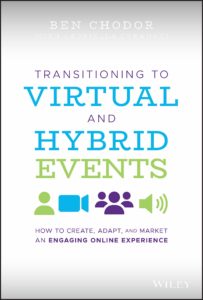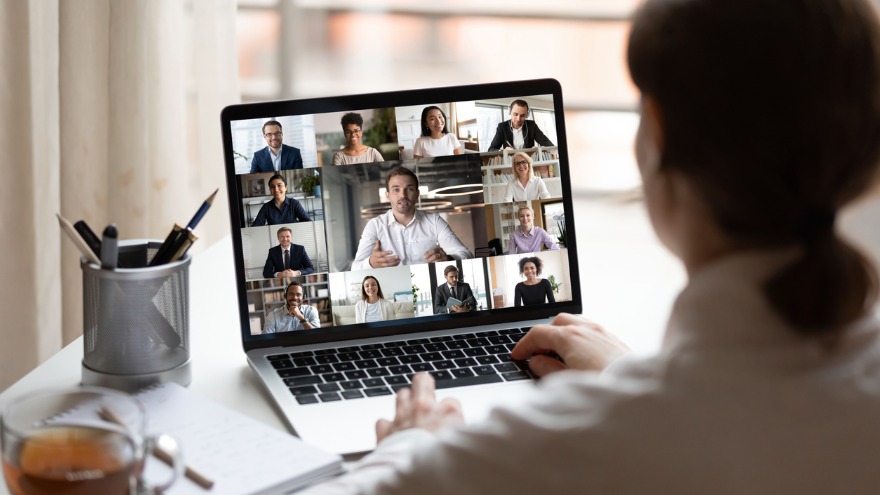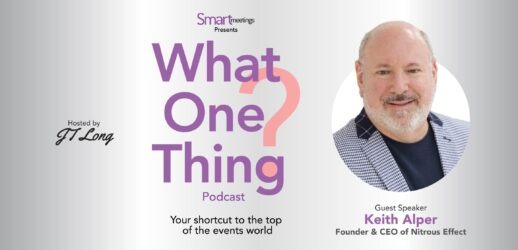What to ask for when evaluating your virtual meeting’s effectiveness
Editor’s Note: Since one of the biggest trends of 2020 is the shift to streaming meetings, we asked Ben Chodor and Gabriella Cyranski, authors of the new book, Transitioning to Virtual and Hybrid Events: How to Create, Adapt, and Market an Engaging Online Experience, to share an excerpt (edited for space) with tips for analyzing the cache of data to determine whether we are doing it right.
 One of the most game-changing benefits that a virtual event can offer is the amount of data we can provide about attendee activity. This data benefits the event organizer because it tells you what sessions were most popular and well attended, who was there, and how long they stayed. For sponsors and exhibitors, data can tell you who visited your booth or clicked on your ad and what else that person did while they were engaging with you.
One of the most game-changing benefits that a virtual event can offer is the amount of data we can provide about attendee activity. This data benefits the event organizer because it tells you what sessions were most popular and well attended, who was there, and how long they stayed. For sponsors and exhibitors, data can tell you who visited your booth or clicked on your ad and what else that person did while they were engaging with you.
Bonus: This rich data can also help marketers build detailed lead-scoring models.
At a physical event, you may get the list of people who registered and attended. Badge scanners can capture who walked into a session room, but not how long they stayed or whether they asked a question. Badge scanners will also tell you who was in your booth, but did they talk to anyone, were they just there to grab a giveaway and then did they leave?
Virtual event data can give you a series of reports to answer these questions and so much more. Here’s the breakdown of what you can expect.
Programming Key Data Points
Most sessions are packaged as webcasts of different lengths. You will be able to collect the following reports for each of your webcasts.
- The current status of the webcast (live, on demand, starts in…)
- Total registrants, total attended (live and on demand), live conversation rate, and average view time
- Interactivity with polling questions, Q&A, documents accessed (handouts), and group chat lines
- Viewers by browser
- Viewers by OS
Individual Reports
The reports listed below track all the individual actions taken throughout the event you can get data on:
- Registration: Includes registered versus attended, registration page hits, number of registrants for each day, and affiliate data-tracking, complete with conversion rates.
- Live attendance trends: Minute-by-minute breakdown of attendance during live run of the webcast. This report will highlight peak number of viewers, unique live viewers and when viewers joined and left the webcast, providing insight into audience interest in the content.
- On-demand attendance trends: Day-by-day breakdown of attendance during the on-demand period, including the number of unique viewers by the most active day.
- Question and answers: Summary of question status (asked, answered, ignored, approved, untouched) and trend tracking to determine volume of questions during live run of the webcast. Provide this report to speakers after the live broadcast to review activity and follow up with users.
- Group chat: Trend tracking to determine volume of chat activity during live broadcast of the webcast. A full transcript of all chat activity can be reviewed and exported.
- Polling questions: Summary of all polls pushed during the webcast, the number of respondents during the webcast and unique viewers.
- Surveys: Includes number of responses to each question and a breakdown of the responses. This also measures the number of users who viewed the question but elected not answer.
- Handouts: Total document views and unique viewers.
- Invite a friend activity: Includes all “invite a friend” usage, and conversion rates to registrations.
- Messaging: Complete tracking of all messaging activity, such as when the email was sent, whether it was opened, bounced, unopened, and additional details on potential reasons for the bounced emails.
- Technical data: Summary of users by platform and browser to evaluate the devices (e.g. desktop, mobile) and other information on how participants engaged with the webcast.
- Speaker activity: A comprehensive log of all presenter actions, such as starting the webcast, transitioning slides and pushing polls to the audience.
- Benchmarks: Compare one webcast to another webcast. Allowing the ability to compare registration-versus-attended conversion, live-to-on-demand conversion, average view time, average webcast duration and polling responses.
- Quality of experience report: Summary of users based on their experience and the quality of their viewing experience. The report shows viewer activity for each person who was on the webcast. If that user had issues, you will be able to see errors, buffering, quality-level changes and more summed with each viewer update, which is collected every 10 seconds.
All this information will enable you to score leads, see what topics and sessions resonated most, which handouts were most downloaded and so much more. This reporting also provides more value to your sponsors and is a strong argument you can use to justify the value you are providing them through their sponsorship and exhibit opportunity.
Lastly, you will be able to make data-driven decisions on how to update your event next time.




